[Windows 11/10] Introduction to the Windows Update Feature
Windows Update helps you keep your computer up to date, which includes the Windows operating system, the updates of Microsoft products, and the updates of third-party device drivers (e.g. the drivers ASUS provides). And, Windows allows you to decide when and how to get the latest updates to keep your device running smoothly and securely. In most cases, Windows downloads and installs the updates in the background, and completes the updates after restarting the computer. Make sure your computer connected to the AC adapter when you know updates will be installed to prevent no power during the update process.
Please go to the corresponding instruction based on the current Windows operating system on your computer:
Windows 11 operating system
Table of Contents:
Manually execute Windows Update
- Type and search [Windows Update settings]① in the Windows search bar, then click [Open]②.
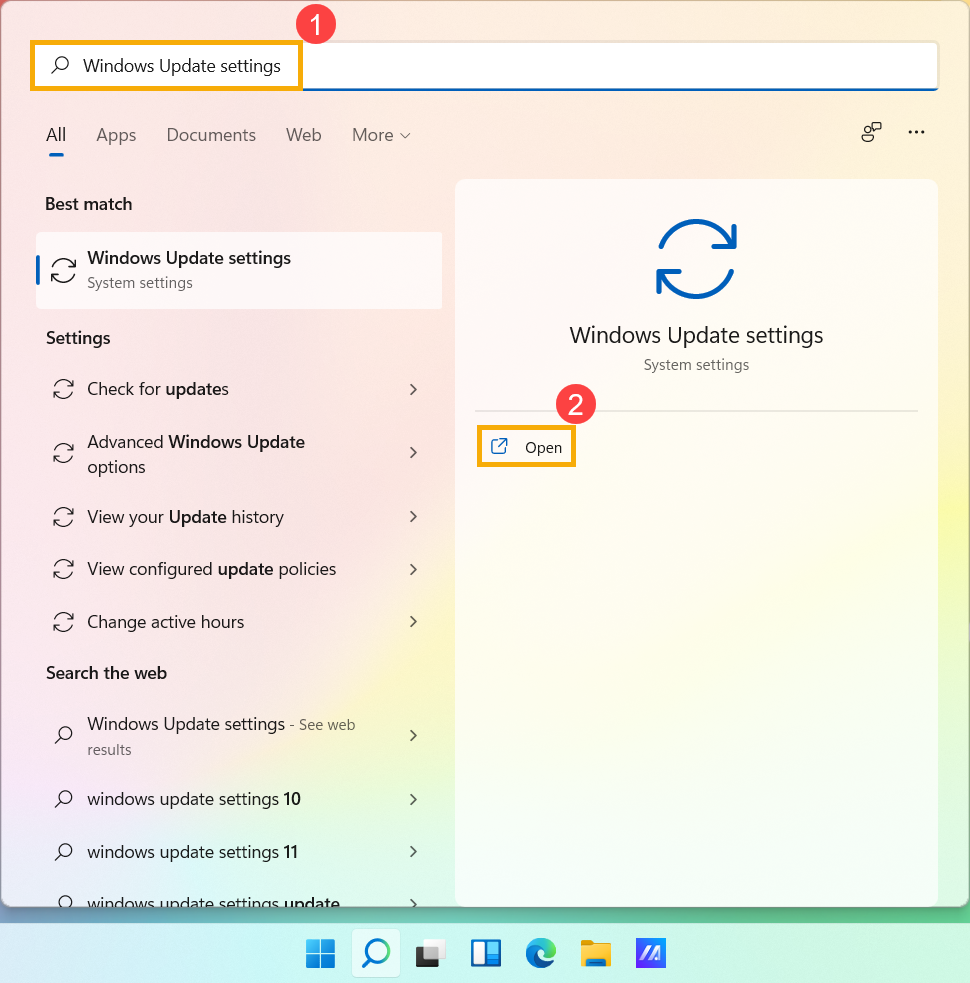
- Click [Check for updates]③.
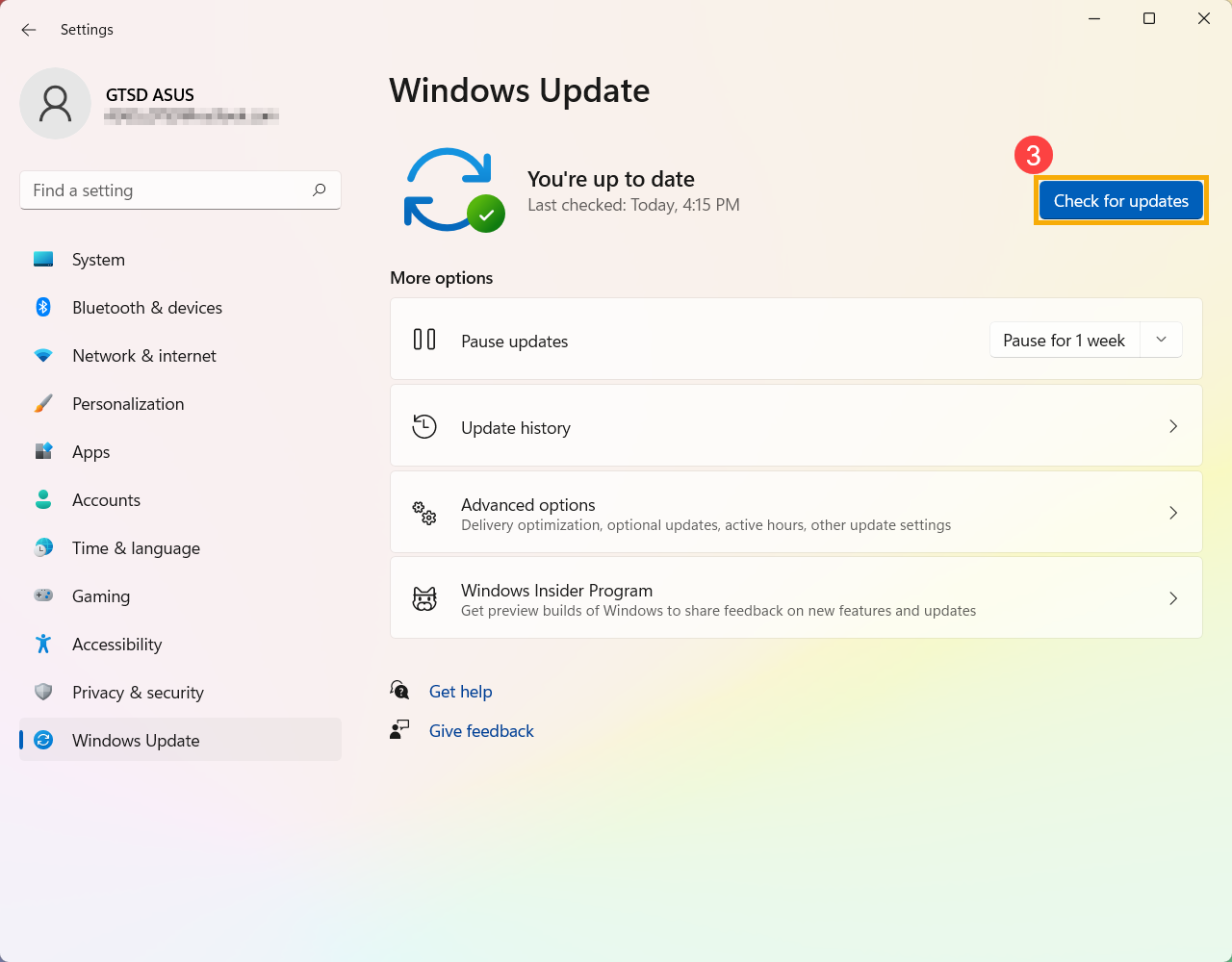
- If a feature update is available for your computer, it will appear separately on the Windows Update page and start to download and install. Some updates may need to be additionally clicked “Install now” by yourself.
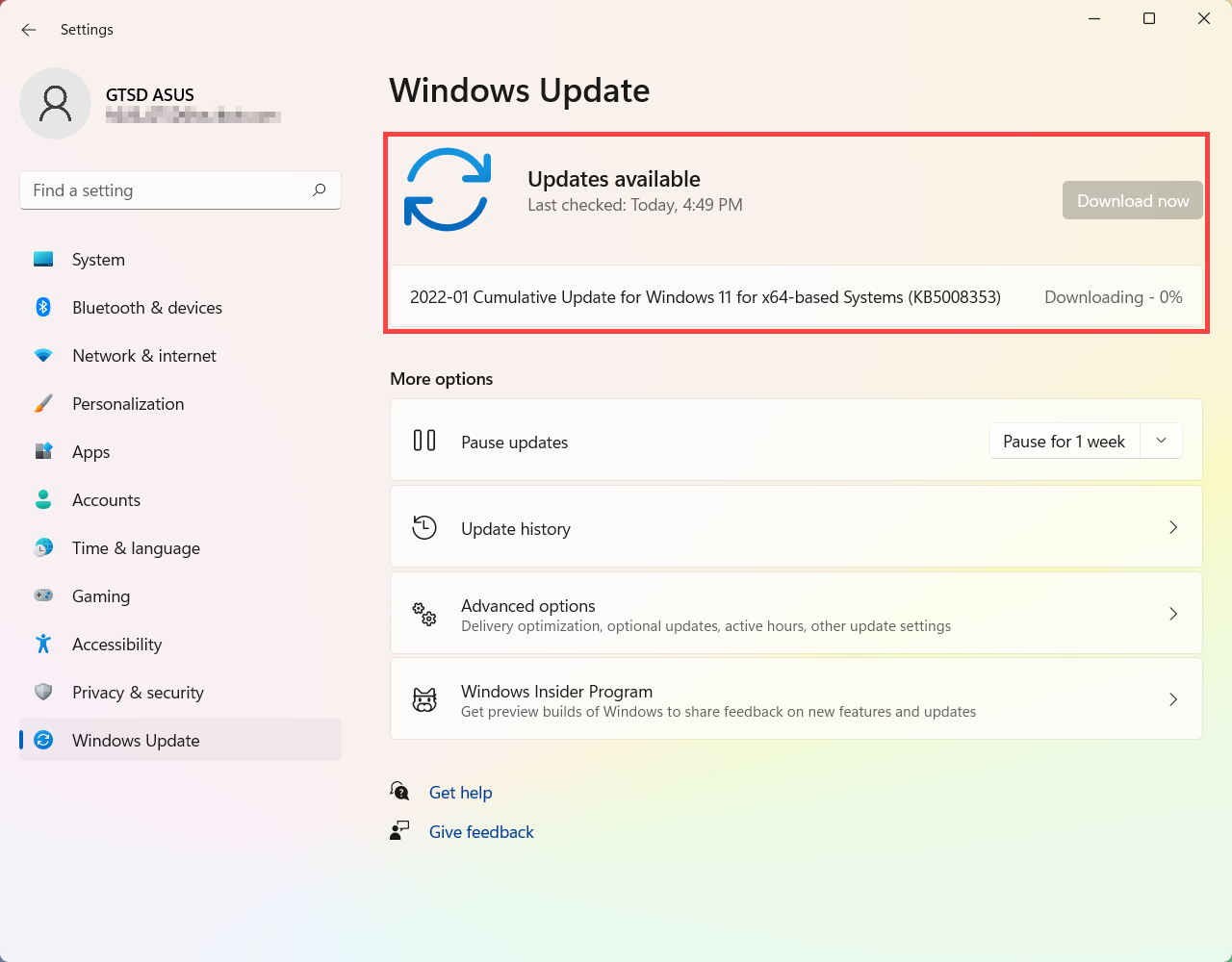
- Some updates may ask restarting your computer, so you can select [Restart now]④. Otherwise, if you don’t want to restart the computer yet, you can select [Schedule the restart]⑤ to set up the restart schedule.

- After entering the Schedule the restart page, set Schedule a time as [On]⑥, and then pick a time and day you want for the restart⑦.
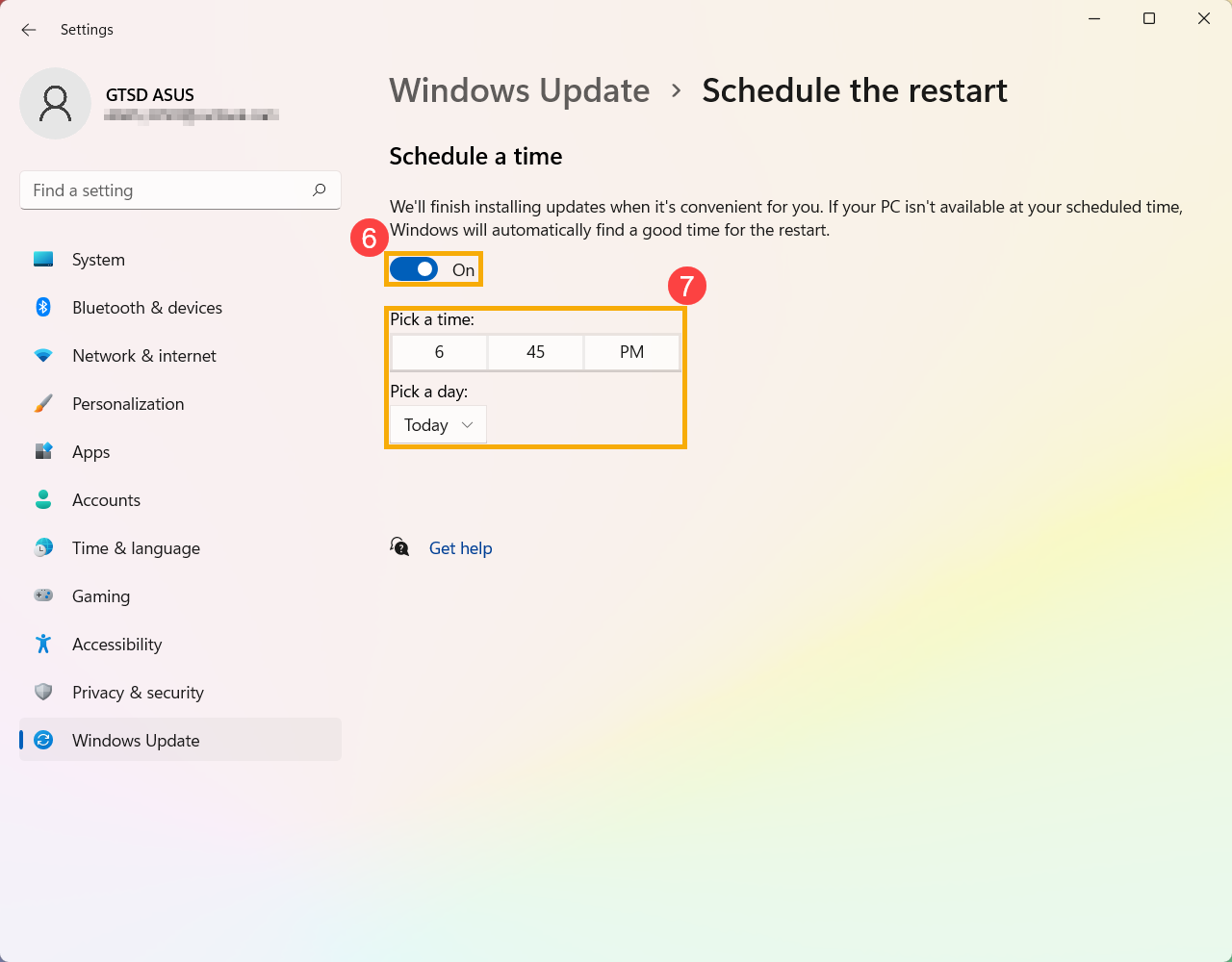
Back to Table of Contents
Stop updates from downloading and installing
In Windows 11, you cannot stop updates entirely because they help keep your device safe and secure, updates will eventually need to be installed and downloaded, regardless of your update settings. You can refer to the following way to temporarily pause updates to be downloaded and installed. But, after the pause limit is reached, you will need to install the latest updates before you can pause updates again.
- Select [Pause for 1 week] on the Windows Update page. Otherwise, you can click the scroll-down menu to choose the period you want to pause updates.
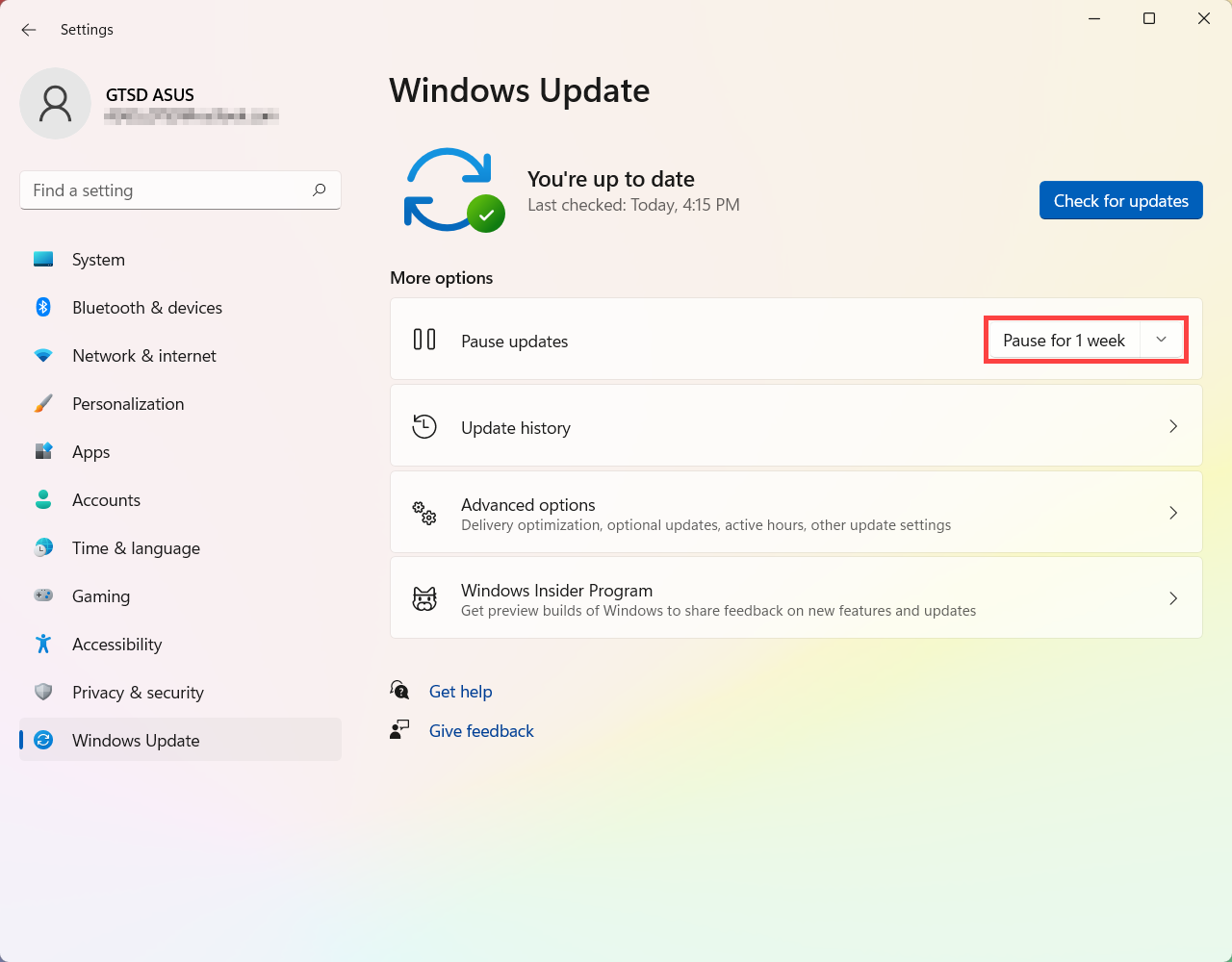
- Windows will resume updates after 1 week (Or, depending on your selected period.). During this period, you can click [Resume updates] to resume the automatic update at any time.
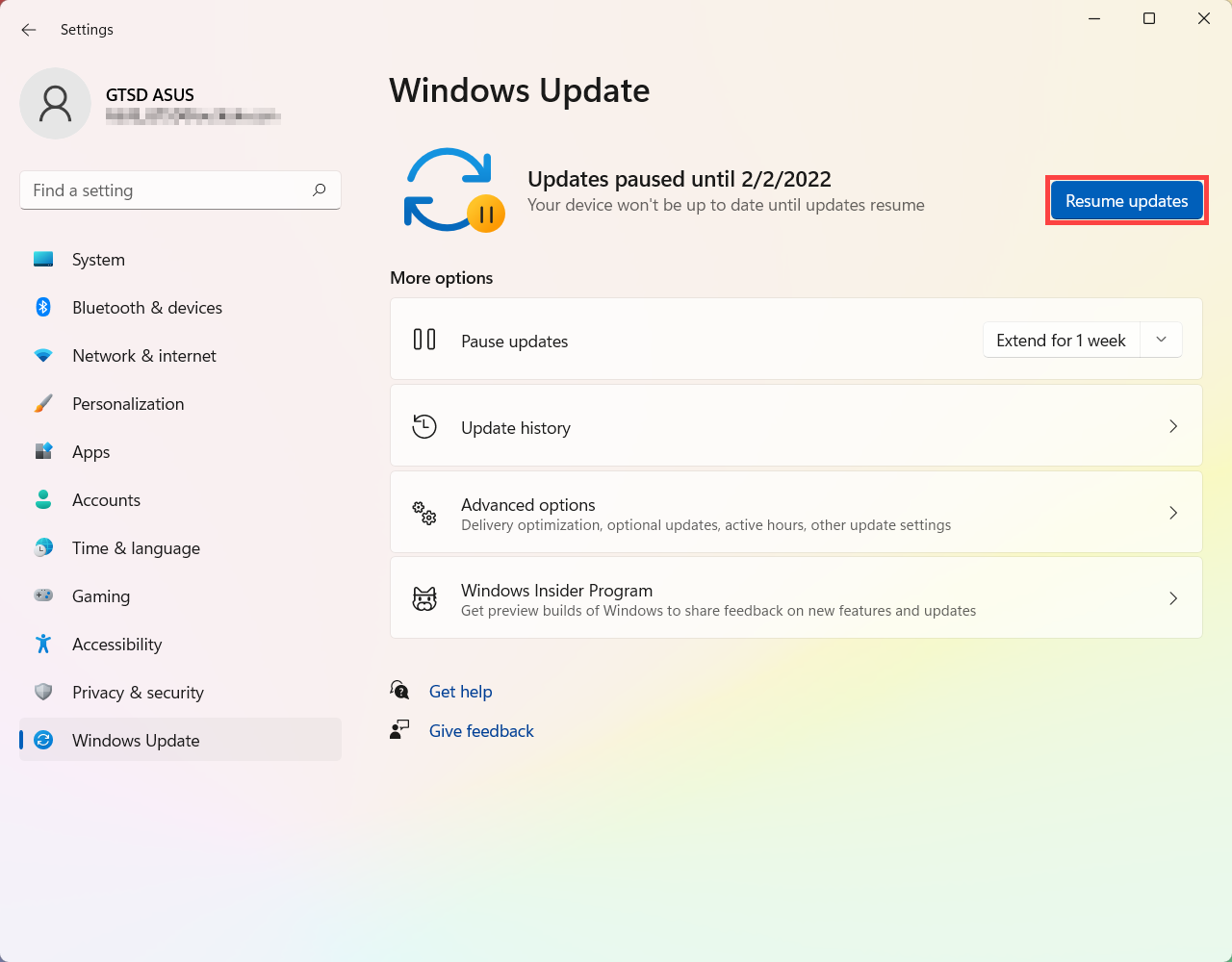
Back to Table of Contents
Get updates when you are away from your PC with active hours in Windows 11
To finish installing an update, your computer will need to restart sometimes. Active hours let Windows know when you are typically at your computer, and then use that information to schedule updates to make sure it will restart when you are not using the computer.
- Select [Advanced options] on the Windows Update page①.

- If you would like to let Windows automatically adjust active hours based on your device’s activity, please set [Adjust active hours] as Automatically on the Active hours field②.
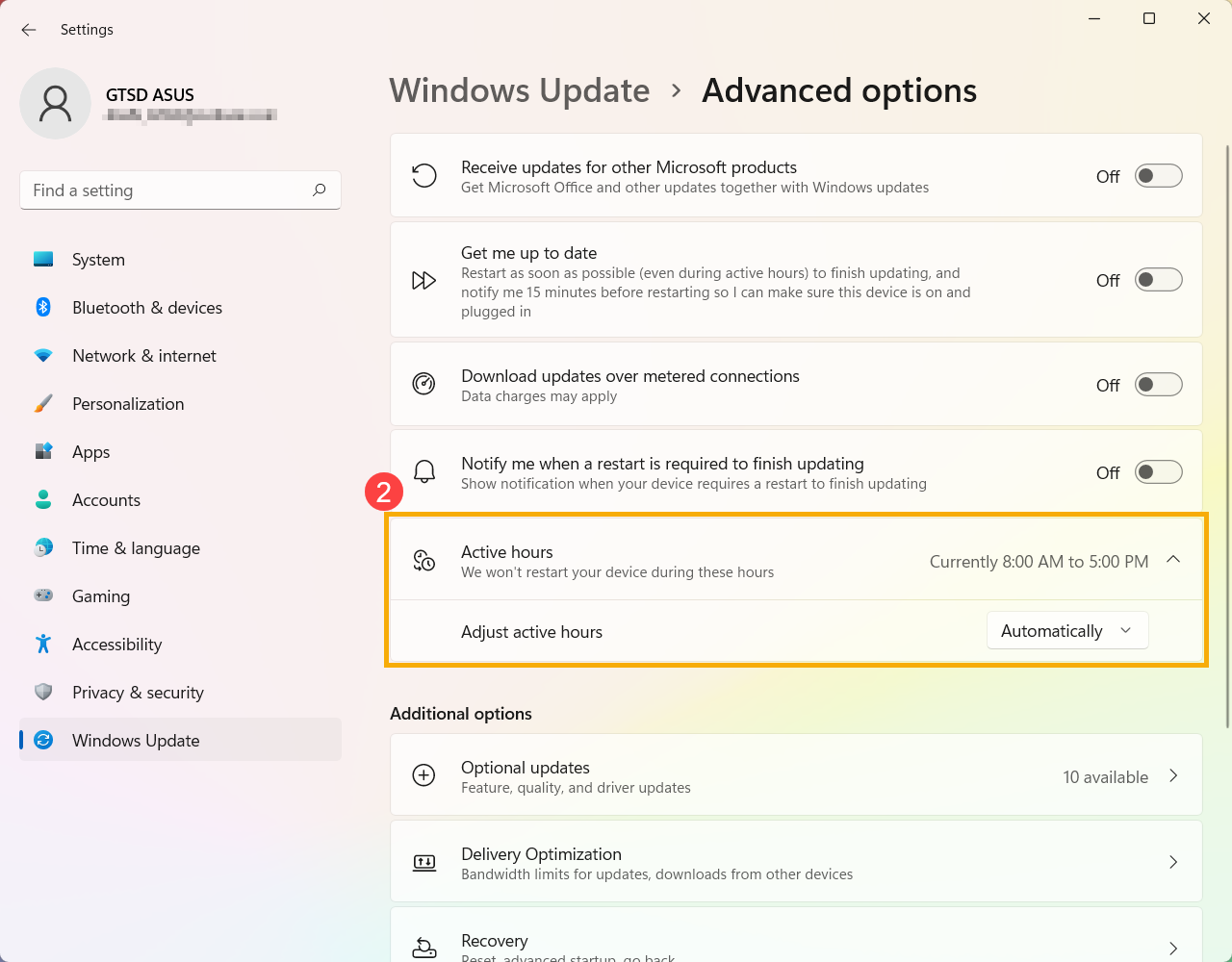
- If you would like to select your own active hours, please set [Adjust active hours] as Manually on the Active hours field③, and then Set active time when you typically use this device④.
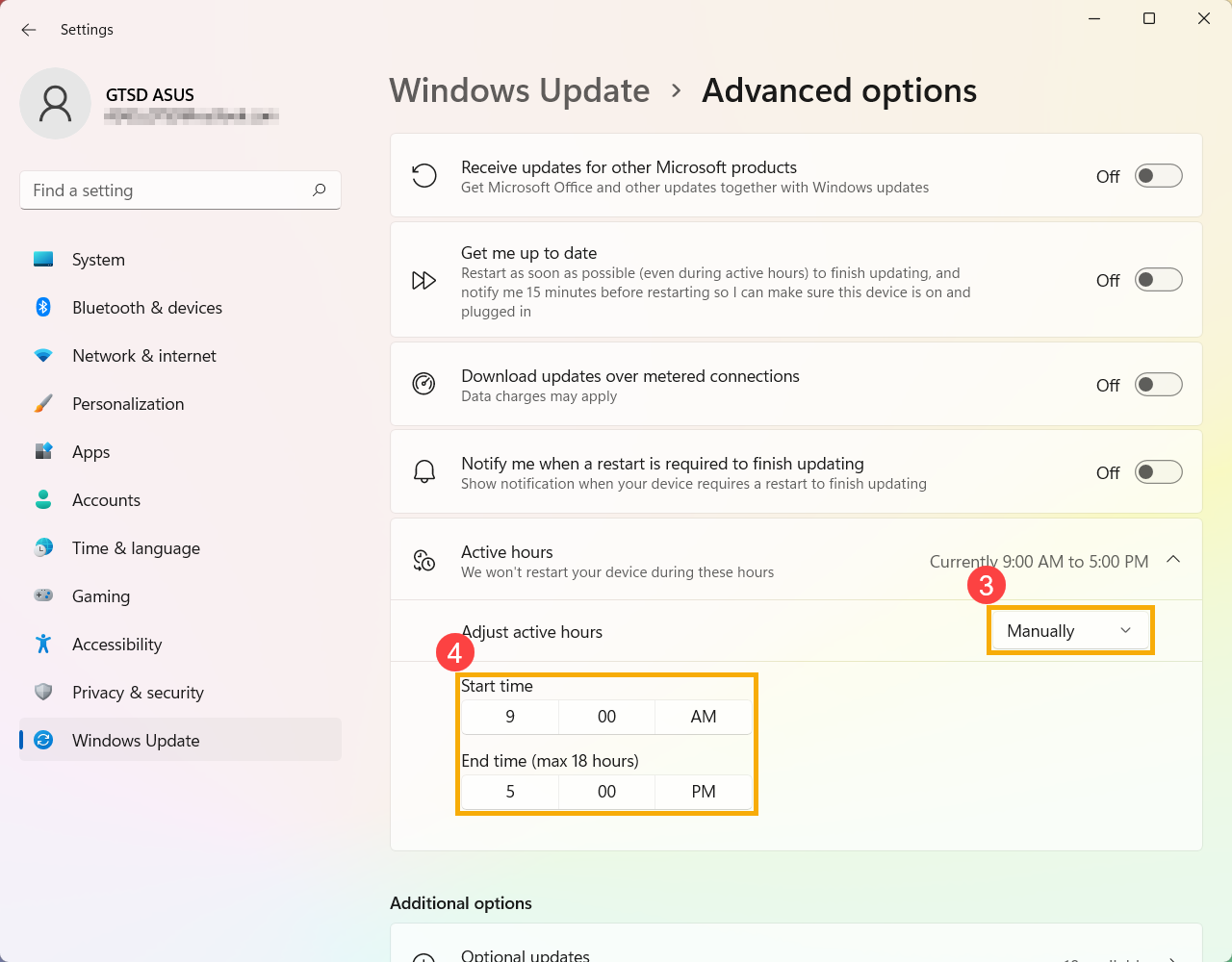
Back to Table of Contents
View update history
An update history is available so you can see which updates were installed, and when.
- Select [Update history] on the Windows Update page①.
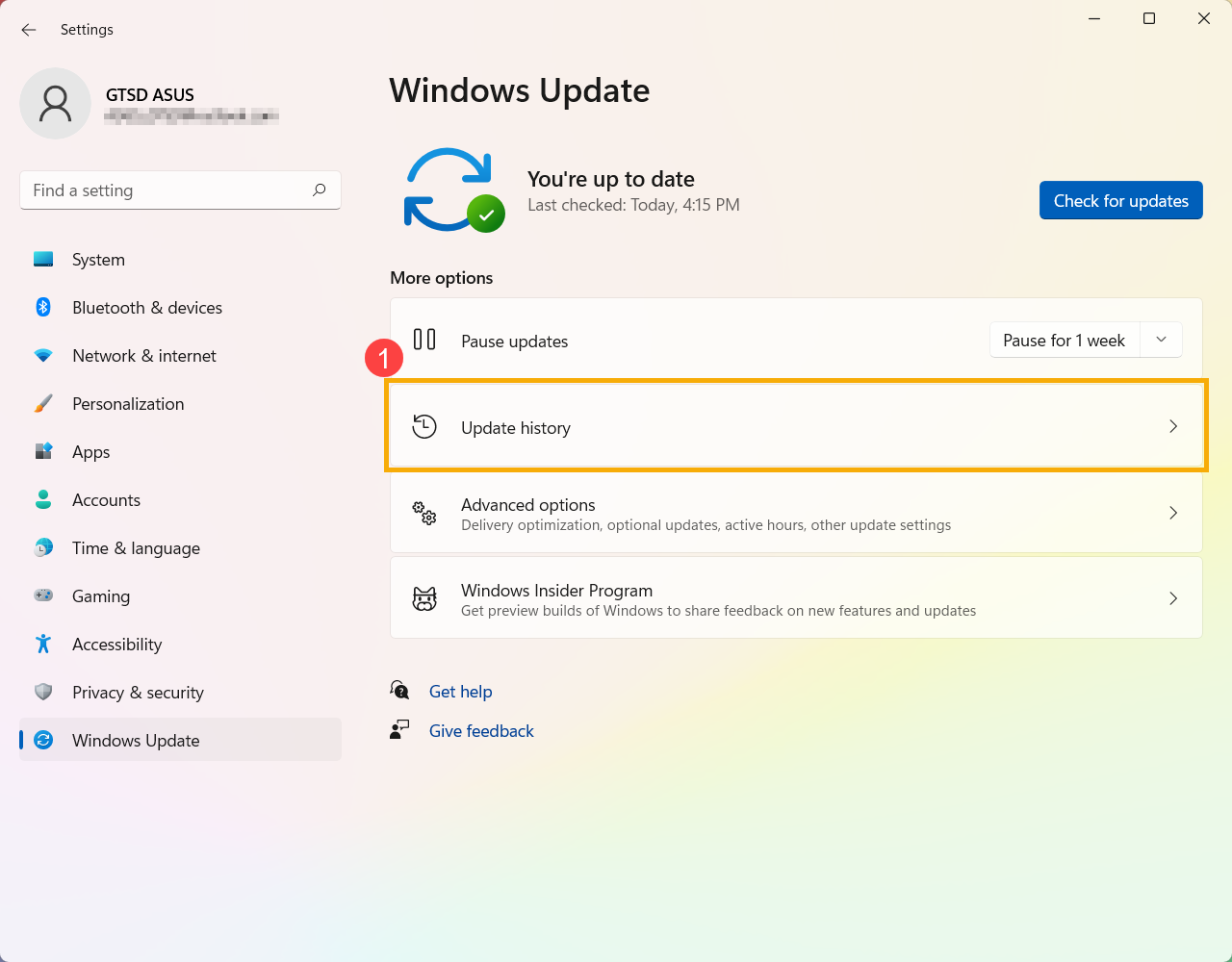
- The following will list the update history on this computer②, which includes Feature Updates, Quality Updates, and Driver Updates.
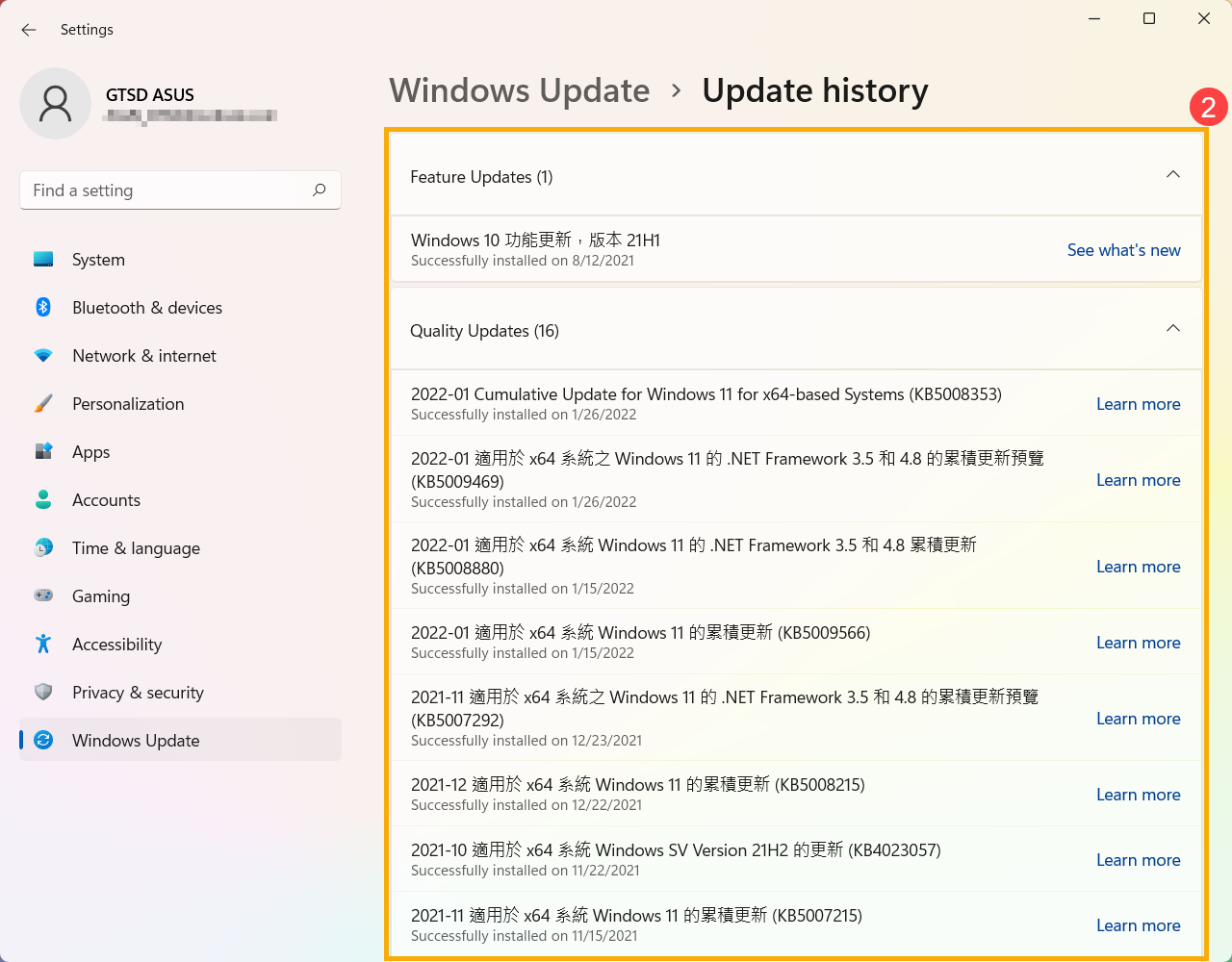
Back to Table of Contents
Windows 10 operating system
Table of Contents:
Manually execute Windows Update
- Type and search [Windows Update settings]① in the Windows search bar, then click [Open]②.
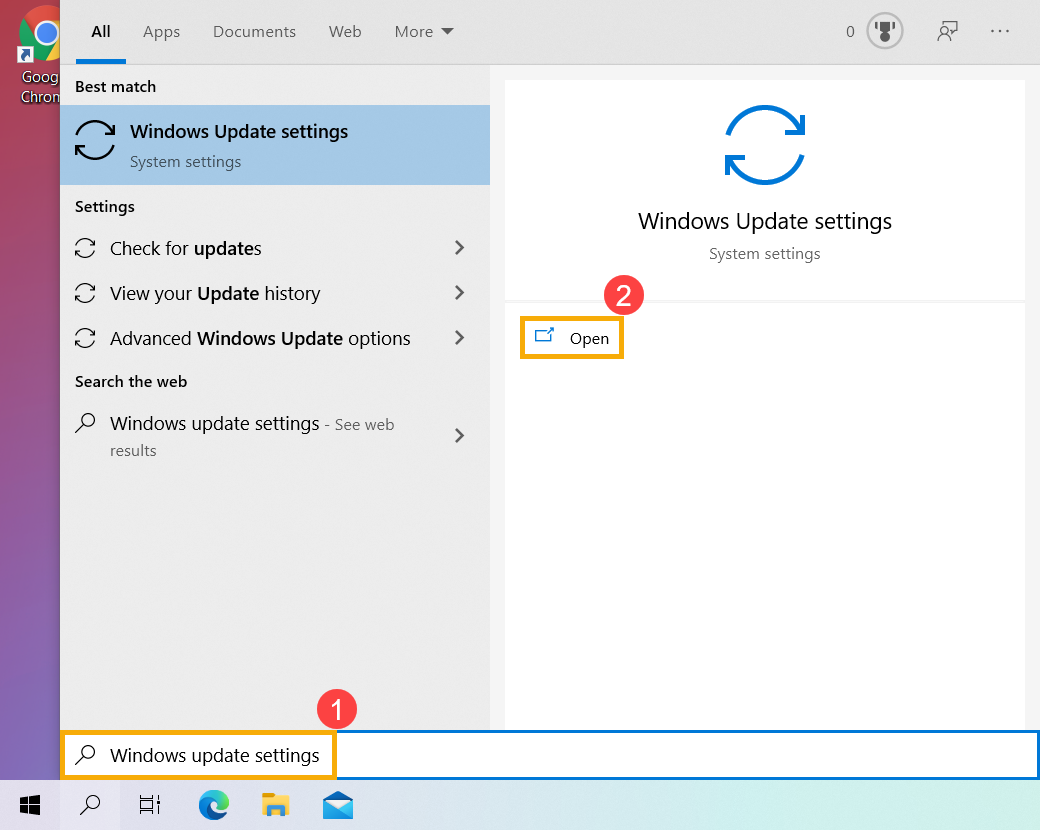
- Click [Check for updates]③.
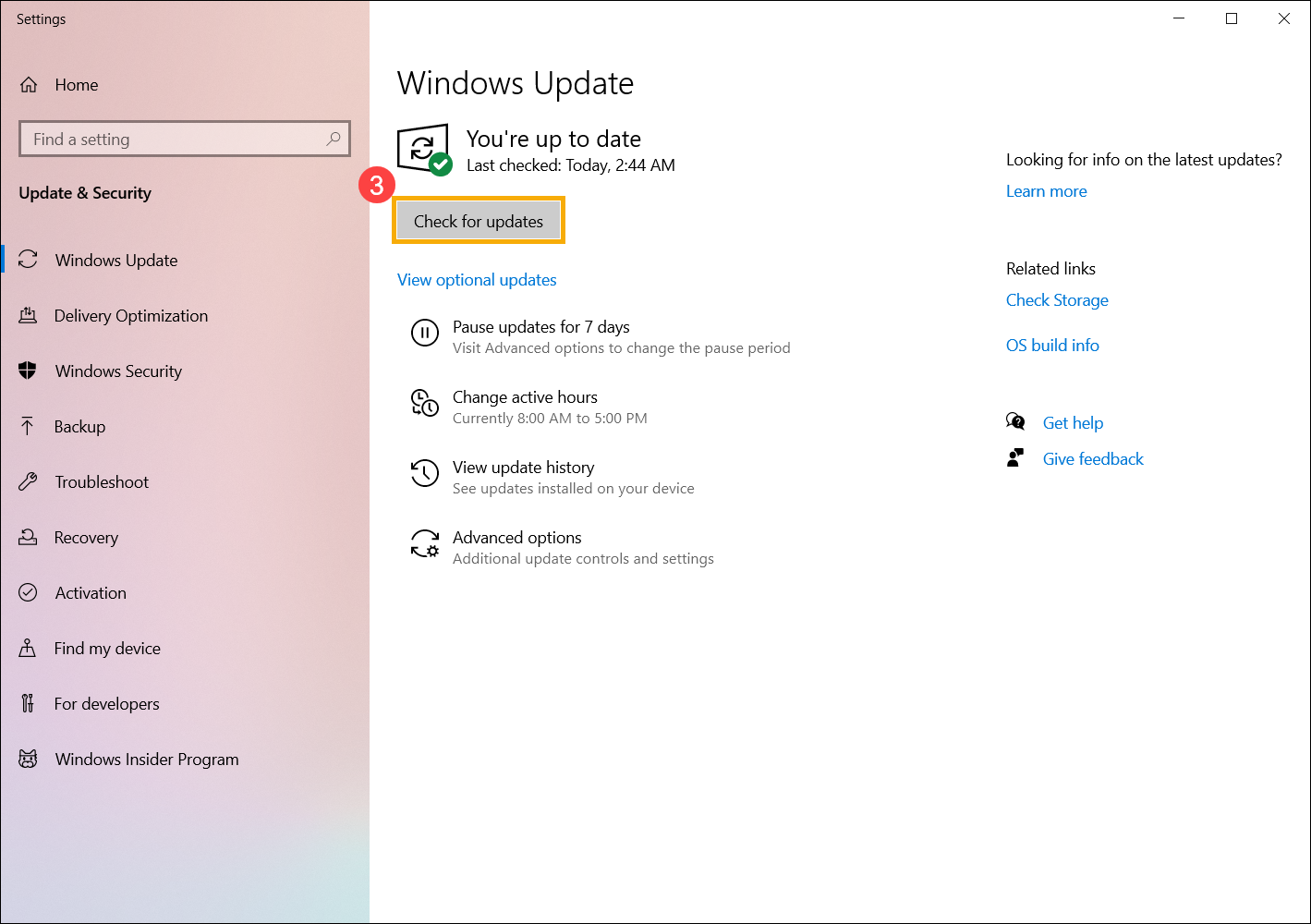
- If a feature update is available for your computer, it will appear separately on the Windows Update page and start to download and install. Some updates may need to be additionally clicked “Install now” by yourself.
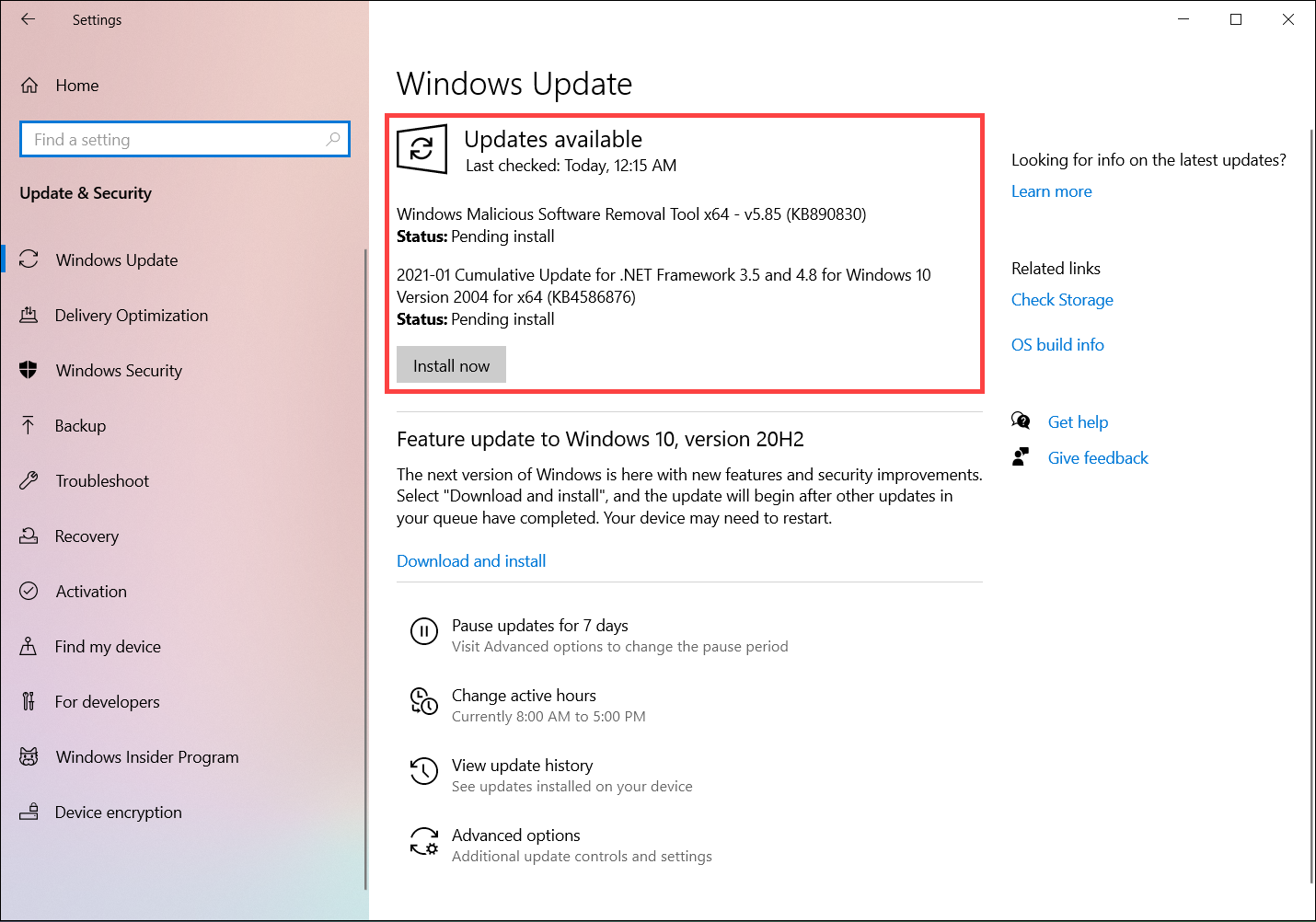
- Some updates may ask restarting your computer, so you can select [Restart now]④. Otherwise, if you don’t want to restart the computer yet, you can select [Schedule the restart]⑤ to set up the restart schedule.
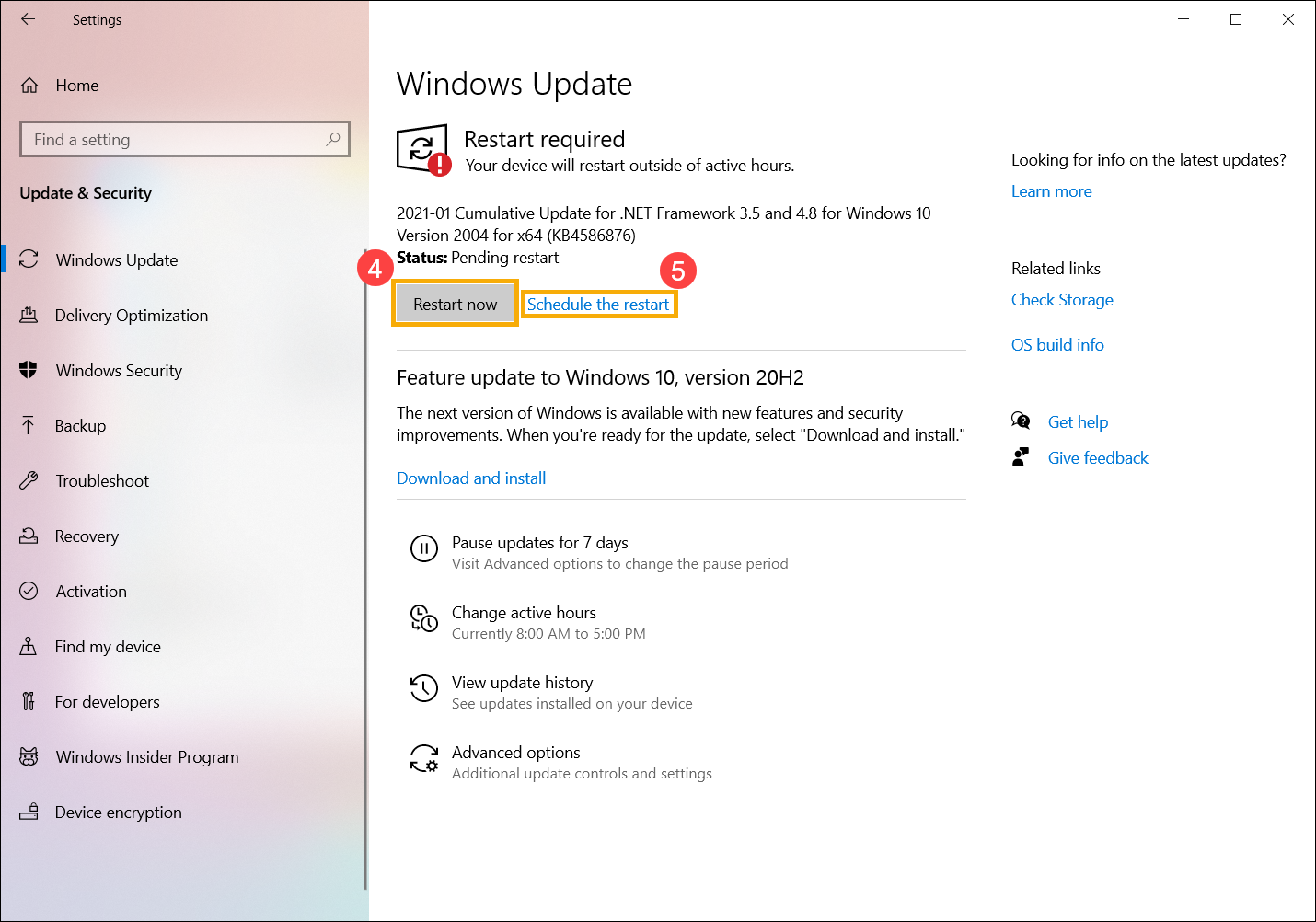
- After entering the Schedule the restart page, set Schedule a time as [On]⑥, and then pick a time and day you want for the restart⑦.
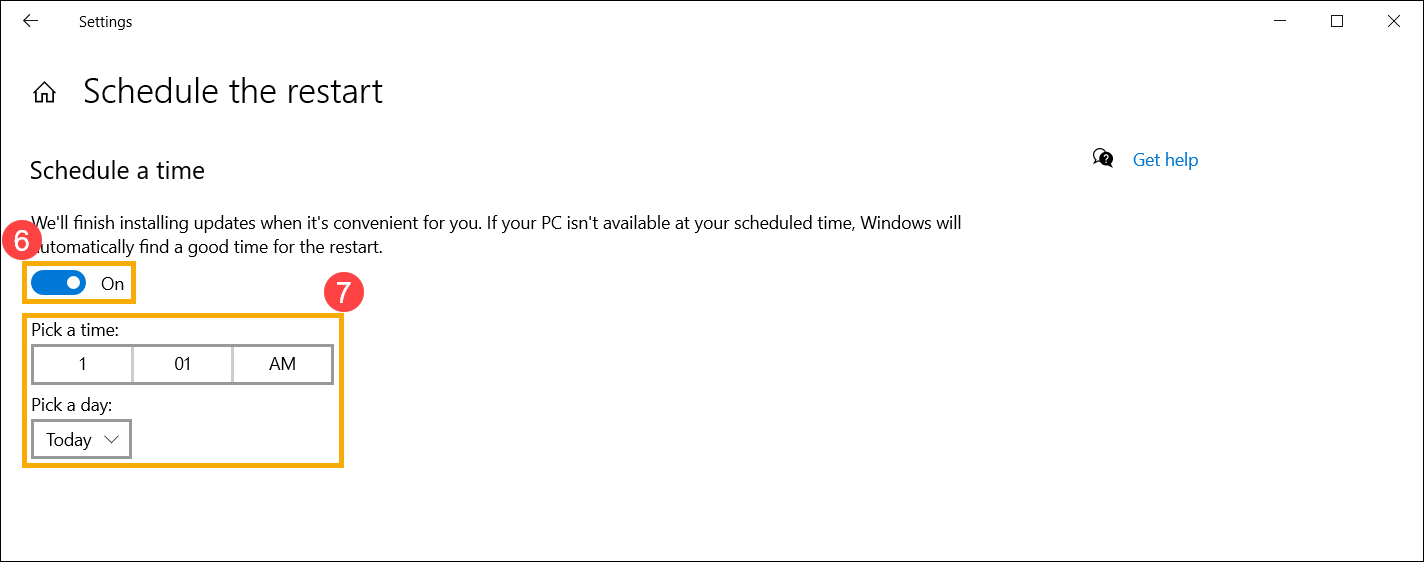
Back to Table of Contents
Stop updates from downloading and installing
In Windows 10, you cannot stop updates entirely because they help keep your device safe and secure, updates will eventually need to be installed and downloaded, regardless of your update settings. You can refer to the following two ways to temporarily pause updates to be downloaded and installed. But, after the pause limit is reached, you will need to install the latest updates before you can pause updates again.
- Select [Pause updates for 7days] on the Windows Update page.
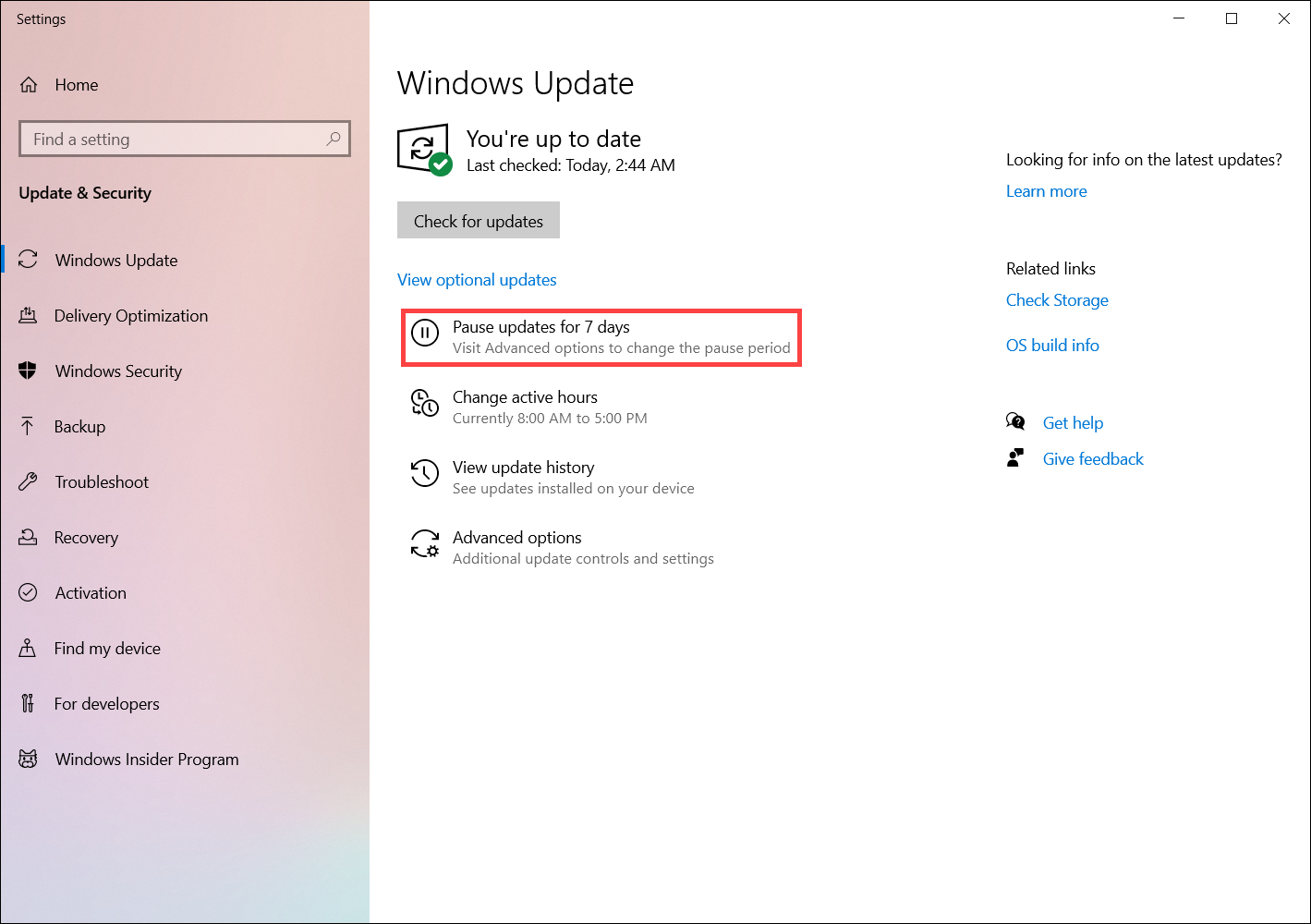
Windows will resume updates after 7 days. During this period, you can click [Resume updates] to resume the automatic update at any time.
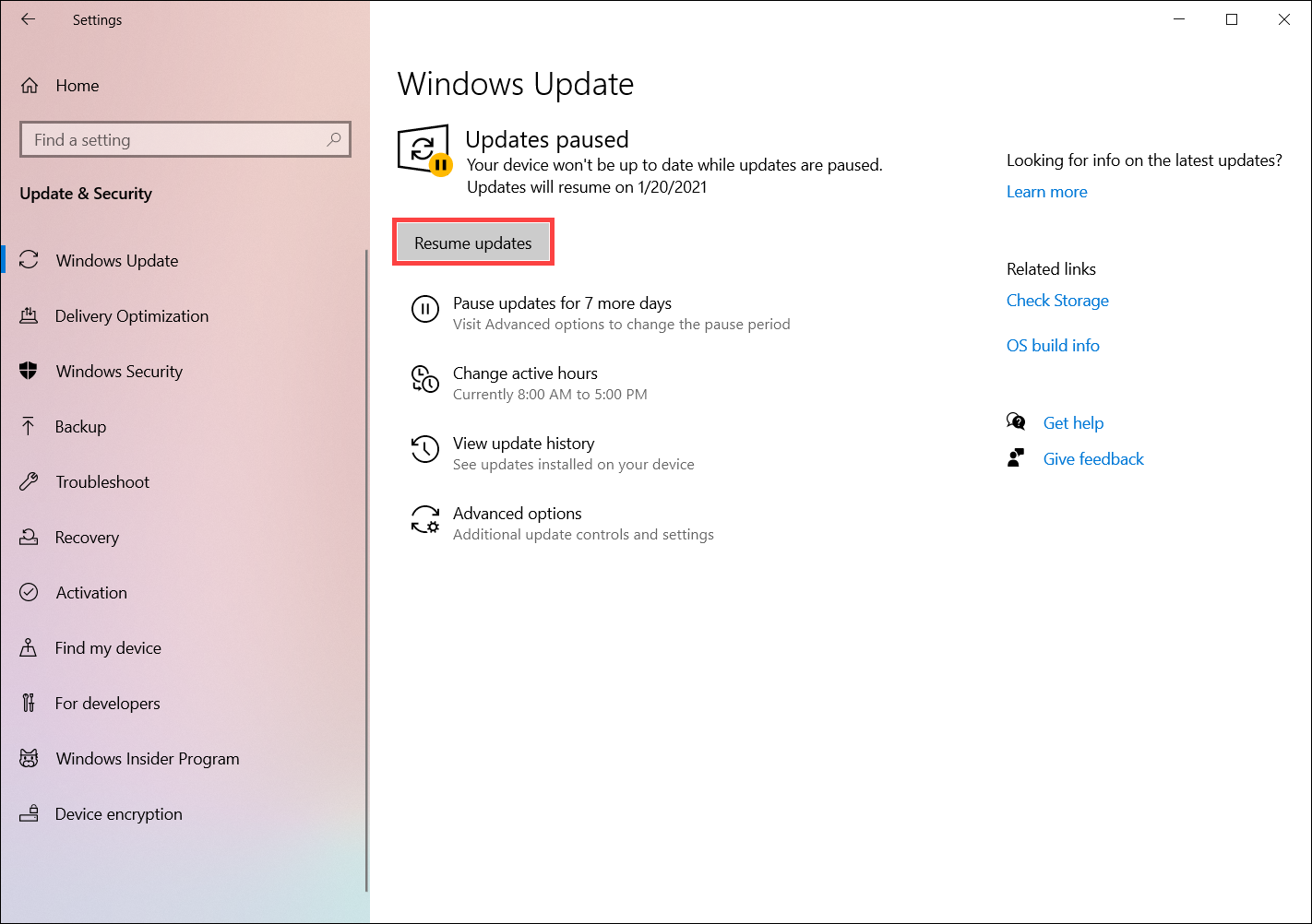
- The second way, select [Advanced options] on the Windows Update page.

In the Pause updates section, select the date which you would like to pause, up to 35 days.

Back to Table of Contents
Get updates when you are away from your PC with active hours in Windows 10
To finish installing an update, your computer will need to restart sometimes. Active hours let Windows know when you are typically at your computer, and then use that information to schedule updates to make sure it will restart when you are not using the computer.
- Select [Change active hours] on the Windows Update page①.
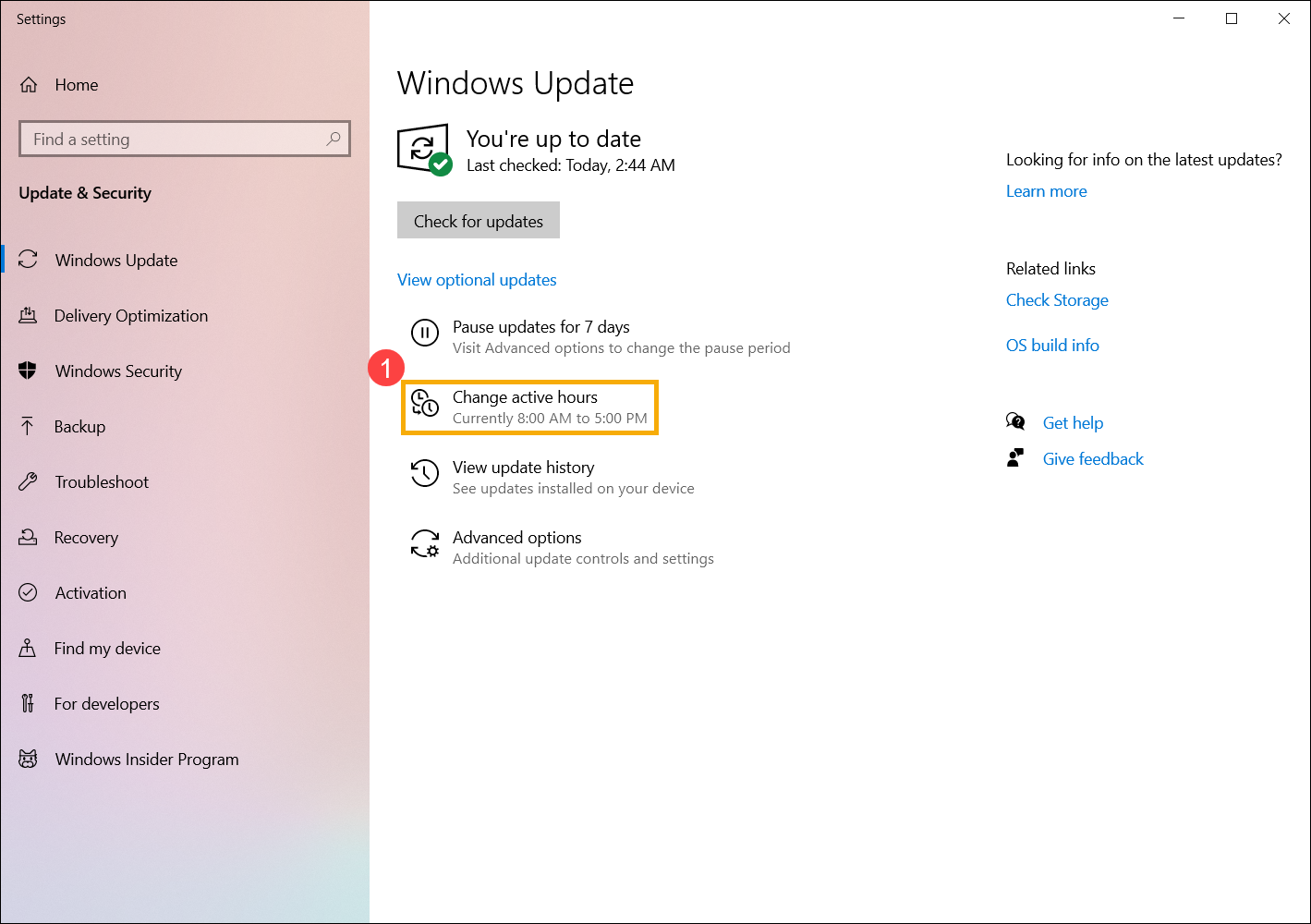
- If you would like to let Windows automatically adjust active hours based on your device’s activity, please set [Automatically adjust active hours for this device based on activity] as On②.

- If you would like to select your own active hours, please firstly set [Automatically adjust active hours for this device based on activity] as Off③, and then select [Change]④.

- Set active time when you typically use this device⑤, then select [Save]⑥.
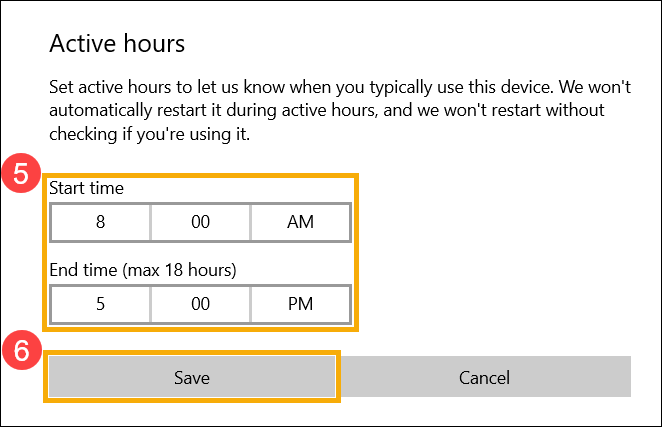
Back to Table of Contents
View update history
An update history is available so you can see which updates were installed, and when.
- Select [View update history] on the Windows Update page①.

- The following will list the update history on this computer②, which includes Quality Updates, Feature Updates, and Driver Updates.
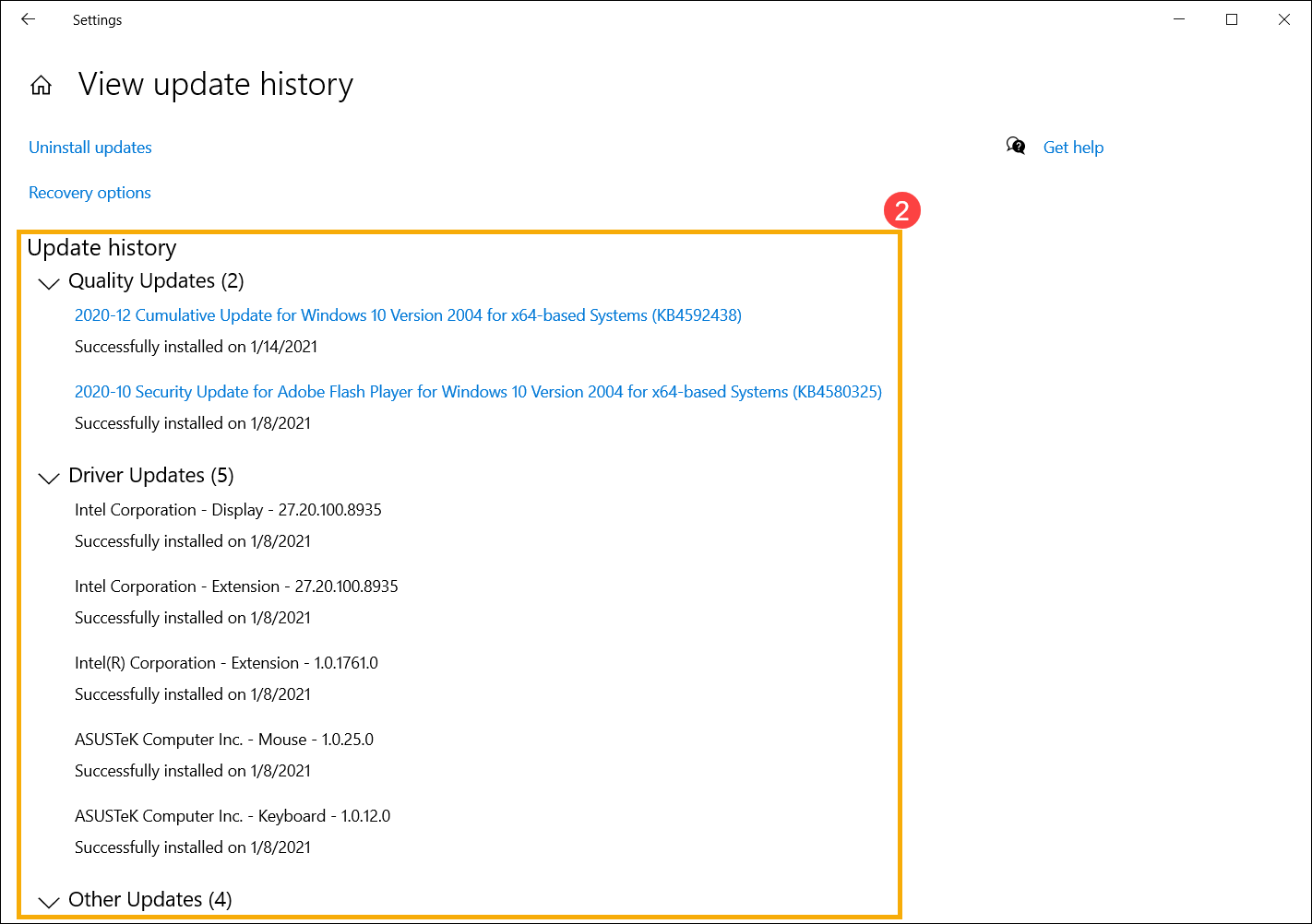
Back to Table of Contents




























